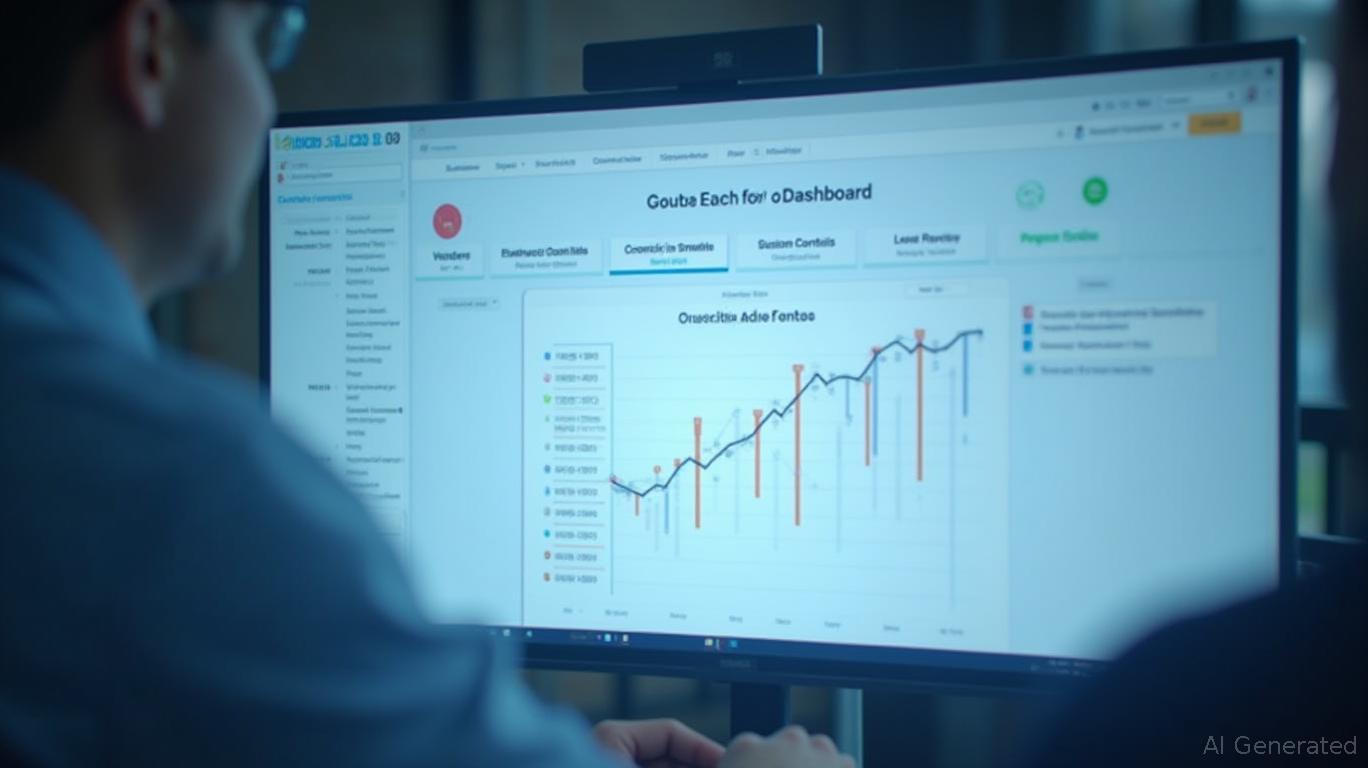Felix Group's Turnaround Gains Momentum: A Cautious Buy on Cash Flow Improvements?
Felix Group Holdings (ASX:FLX) has long been a cautionary tale in the Australian tech sector, plagued by losses and a precarious financial outlook. But recent developments suggest a potential inflection point: the company reported its first positive operating cash flow in Q1 FY25, marking a critical step toward sustainability. While challenges like negative equity and cash runway constraints remain, the combination of revenue growth, strategic capital allocation, and operational efficiency improvements positions FLX for a cautious buy—if investors are willing to weigh short-term risks against long-term potential.
The Turnaround Begins: Cash Flow and Revenue Growth Take Center Stage
Felix's Q1 FY25 milestone—positive operating cash flow of $493,349—signals a pivotal shift from its history of cash burn. This progress is underscored by robust revenue trends:
- Contractor Annual Recurring Revenue (ARR) grew 29% YoY to $6.4 million in H1 FY25, driven by a 3-year renewal with CIMIC Group (generating $2.02 million in revenue) and expanding its vendor marketplace.
- Total Group ARR rose 22% to $8.3 million, with 115,000 vendors on its platform, up 27% from H1 FY24.
The company's focus on scaling its Contractor platform and monetizing its vendor ecosystem has created a flywheel effect: new contracts and partnerships (including its first international expansion) are fueling recurring revenue. CEO Tom Price emphasized in recent earnings: “We're prioritizing deals with long-term value, not just short-term wins.” This discipline is critical as FLX aims to reduce its net cash burn, which stood at $4.1 million annually as of mid-2024, down from prior years.
Capital Allocation: Prudent Priorities Amid Constraints
With no dividends declared in early 2025, Felix is reinvesting heavily in its core platforms. Key initiatives include:
1. Tech Infrastructure: Enhancing AI-driven matching algorithms to reduce client acquisition costs.
2. Global Expansion: Entering Latin America, where remittance corridors (e.g., Mexico to the U.S.) offer high-growth opportunities.
3. Vendor Marketplace Monetization: Charging fees for premium listings and data analytics tools, leveraging its 115,000-vendor network.
The strategy's success hinges on converting these investments into gross margin expansion. While Felix's loss per share narrowed to $0.012 in H1 FY25 (vs. $0.015 in H1 FY24), it still faces a negative shareholders' equity of $1.3 million and a cash runway of less than one year. These metrics highlight the need for continued operational discipline—and perhaps eventual funding.
Risks: Negative Equity, Dilution, and the Going-Concern Question
The company's auditors flagged a material uncertainty around its ability to continue as a going concern, citing persistent losses and limited liquidity. Key risks include:
- Equity Dilution: A potential equity raise could dilute existing shareholders, especially at FLX's current market cap of $39 million (vs. a $60 million valuation in late 2023).
- Cash Runway Pressure: Even with improved cash flow, Felix must maintain or accelerate ARR growth to avoid needing further capital.
- Competitive Threats: Rivals like SEEK and Indeed are expanding into niche contractor markets, raising execution risks.
The stock's underperformance over five years reflects these concerns, but its 17.39% YTD return (vs. the ASX200's 4.25%) hints at renewed investor optimism in its turnaround narrative.
Investment Thesis: Cautious Buy, but Monitor Closely
Bull Case: Felix achieves breakeven in 2025 by reducing cash burn to $3 million annually (from $4.1M) and grows ARR to $10 million. Its vendor marketplace and international contracts could drive a valuation re-rating.
Bear Case: Losses persist, requiring a dilutive equity raise that pressures the stock. Competitors undercut pricing, or cash reserves dwindle faster than expected.
The balance tilts toward a cautious buy, but with strict risk management:
- Entry Point: Target $0.19/share, with a stop-loss below $0.15.
- Triggers to Sell: Missed ARR targets, a sudden cash burn spike, or a negative equity warning.
- Upside Catalyst: A Q3 FY25 update confirming reduced cash burn and new international contracts.
Conclusion
Felix Group's journey from cash-strapped startup to potential breakeven player is far from assured, but its operational progress merits attention. Investors must accept near-term volatility for the chance to capitalize on its recurring revenue model and strategic pivots. For now, the data suggests a hold with a cautious bullish bias, best suited for those with a high risk tolerance and a 2–3-year horizon.

Stay tuned for updates on Q3 FY25 cash flow and ARR performance—the next critical milestones in this turnaround story.

Comments
No comments yet